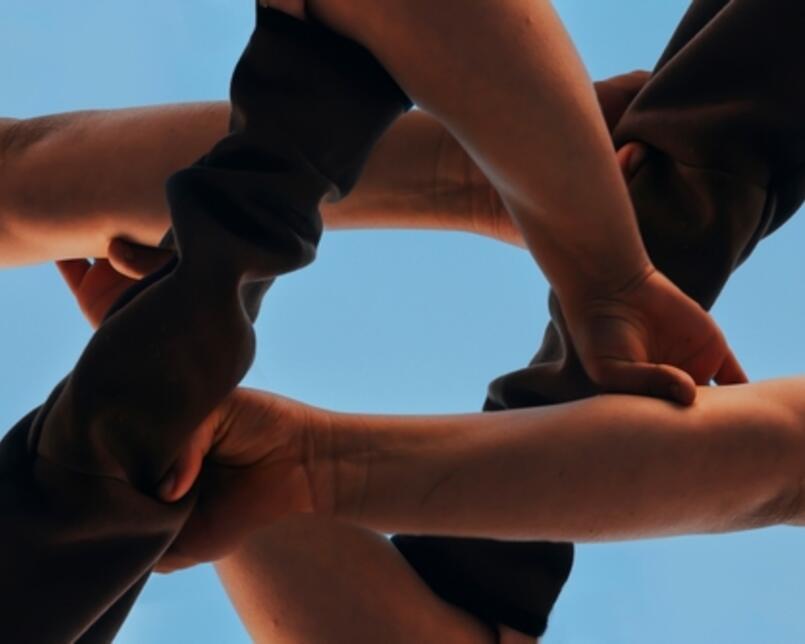The desire to find ‘the answer’ to Jewish education is understandable. But it’s a category error. our latest study suggests: We don’t need one big answer. We need many good ones, working together.
Dr Jonathan Boyd
Dr Jonathan Boyd
At times of communal anxiety or institutional uncertainty, it’s natural to seek a single, transformative solution – a ‘silver bullet’ that promises to fix all of our Jewish problems. A new school, a flagship programme, a revolutionary curriculum. But this impulse misunderstands what education is and how Jewish identity is formed.
Jewish identity isn’t delivered through one-off interventions. It’s cultivated slowly, across time and space, through a web of experiences, relationships and meaning-making. If we want to build resilient Jewish futures, we need to shift our focus from single solutions to interconnected ecosystems.
This is one of the key insights from JPR’s new study, which statistically analyses the long-term impact of various Jewish educational experiences on British Jews. The findings challenge the notion that any single intervention can decisively shape identity. Instead, they point to the cumulative power of multiple, overlapping experiences.
Silver bullet thinking treats Jewish identity as a product – something that can be manufactured through the right programme or institution. It’s the logic of the factory: input, process, output.
But Jewish education isn’t a technical problem. It’s a human one. Thinkers like John Dewey and Paulo Freire remind us that education is about transformation as well as transmission. Identity emerges through experience, dialogue and context. It is relational – formed between teacher and learner, individual and community, text and tradition. No single institution or programme, however excellent, can carry that burden alone.
An ecosystem approach sees Jewish education as a long-term, dynamic process. It recognises that no one experience is sufficient. What matters is how experiences interact – how they reinforce, deepen and extend each other over time.
Jewish identity is not passively received; it is actively constructed. Learners engage with diverse environments, role models, narratives and communal practices. In a healthy ecosystem, schools, youth movements, campus initiatives, cultural programmes, digital platforms, synagogues and, most importantly, families, all play a role.
This diversity is not a problem to be solved – it’s a strength to be harnessed. Each part of the ecosystem contributes something unique. No one part can replace the others; each must be connected to what comes next. Every programme should recognise that it is one piece of a larger whole.
But why does this matter?
First, learning is contextual. Dewey taught that education thrives when it connects with lived experience. Ecosystems allow learners to encounter Judaism in multiple settings, making it more relevant and resonant.
Second, identity evolves. People change. Ecosystems support Jewish growth across life stages – from early childhood to adulthood – allowing for re-engagement and reinterpretation.
Third, belonging is built. Community isn’t downloaded; it’s formed through repeated, meaningful participation. Ecosystems cultivate thick relationships – not just with content, but with people, places and values.
Fourth, no single model fits all. Learners come from diverse denominational, familial and socioeconomic backgrounds. Ecosystems offer choice and personalisation, rather than imposing uniformity.
Fifth, resilience comes from overcoming challenges. When one part of the system falters – a school closes, a teacher moves on – others can step in. Ecosystems are adaptive in ways silver bullet solutions are not.

Community isn’t downloaded; it’s formed through repeated, meaningful participation
The desire to find ‘the answer’ to Jewish education is understandable. But it’s a category error. There is no one answer, because the question is not one problem. It’s many: identity, belonging, memory, ethics, community, literacy, joy.
Instead of concentrating resources in singular solutions, we should invest in the connective tissue of Jewish life. That means funding not just programmes, but partnerships, bridges and continuity – between schools and synagogues, educators and families, formal and informal spaces, tradition and innovation.
It also means protecting relationships across denominational and political divides. When we damage those, we weaken the ecosystem that helps the next generation to find meaning in their Jewishness.
Silver bullets won’t engineer the future of Jewish education. It will be grown – carefully, relationally and iteratively – by nurturing ecosystems where Jewish life can flourish in its full complexity. We don’t need one big answer. We need many good ones, working together.
Executive Director
Executive Director
Jonathan has been Executive Director of JPR since 2010, having previously held research and policy positions at the JDC International Centre for Community Development in...
Read more